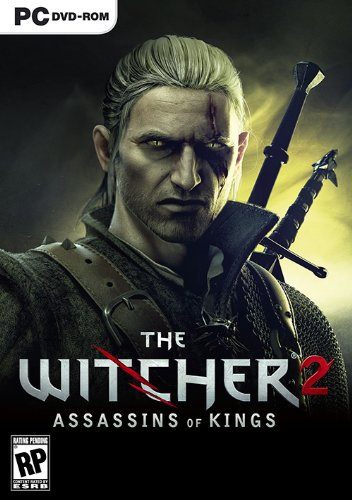The Witcher 2: Assassins of Kings Preview
-
Category: PreviewsHits: 28529

Article Index
Page 3 of 4
I didn't find myself blocking or parrying very often, but I did make use of dodges quite a bit. Since dodging helps Geralt move around the area quickly during a battle, you can usually "pull" a single enemy toward a specific point so that they can quickly be dispatched before the remaining foes advance to your position. And since Geralt has the ability to regenerate vitality (the rate of which is determined by talents, items, and potion consumption), dodging around a battle for a few moments just might give you enough breathing room to carry out the rest of the fight.Beyond standard opponents, The Witcher 2 will also pit us against major "boss" creatures. By the end of the first act, I had dealt with two of them - a massive dragon terrorizing La Valette Castle and a tentacled beast called a kayran that was feeding on fishermen around the town of Flotsam. These types of battles are carried out with the help of quick time events (referred to QTEs from here on out), though this do-something-quickly-now! system is optional and can be switched off if you'd rather not continuously click a mouse button or press "W" at specific intervals during a cinematic portion of the fight (like when you've successfully trapped a tentacle with the Yrden sign and need to slice it off). Two areas where QTEs aren't optional are the fist-fighting and arm wrestling mini-games, but these are pretty entertaining distractions when they occur, so I don't think anyone will mind being forced to react quickly to their on-screen prompts.
One final aspect of combat that I'd like to point out is the tactical use of lures and traps. Should you be specifically on the lookout for the alchemical ingredients dropped by a specific monster, you'll want to place the appropriate lure into one of Geralt's "pocket" slots. For example, harpies are attracted to phosphorescent crystals and trolls will pick up the scent of rotten meat. I didn't get a chance to test them all out, but from what I could tell, your chance of running into a hungry beast is simply increased when its lure is equipped rather than just suddenly calling them forth from the surrounding areas as you stand and wait. However, if you're able to bring all of the lured creatures into one particular area, it's to your advantage to set up some traps in the area first to skew the inevitable battle in your favor.
Alchemy, Crafting, and Encumbrance
The alchemy and crafting systems in The Witcher 2 are quite impressive and have considerably more depth than what we saw in the first title. Before you can start tinkering with either system, you'll need to track down some formulae (for alchemy) or some diagrams (for crafting) so that Geralt has the understanding necessary to create the new items. These are purchased from merchants for the most part, but you'll also pick up a few of the better ones as quest rewards or rare loot. Once you have a formula or diagram in hand, the specifics on what you'll need to craft the item and what the item's statistics will be once finished are automatically added to your journal for easy viewing. Concocting new potions, oils, or bombs is done via the game's meditation menu, while crafting must be done through a blacksmith or another merchant with the necessary tools.
By the time I had reached the end of Act 1, I had picked up nearly eighty different formulae and diagrams, and that had me ransacking every container I found in search of ingredients (using Geralt's medallion will highlight all lootable containers in the immediate vicinity, and because ingredients are so important, you'll be using it a lot). Some ingredients are very rare or even unique, such as the skin you're able to acquire from the kayran I mentioned previously. This forces you to make tough choices, as some diagrams call for the same one-shot ingredient in your inventory. Using the kayran skin as an example, I could choose between using it to craft a very nice armor upgrade called a "Kayran Carapace Reinforcement" or I could use it for some "Kayran Carapace Armor" that had the largest damage reduction bonus of any armor I'd yet seen in the game. Decisions, decisions.
While the categorized inventory screen makes it easy to view all of your acquired formulae, diagrams, and ingredients, you'll no doubt find yourself encumbered on many occasions as you leave a sleeping NPC's home with every piece of timber, can of oil, and roll of cloth he had lying around waiting to be pilfered. Your formulae and diagrams only weigh a tenth of a pound each, but something like an endrega hide will set you back two pounds for every one that you round up. With less than two hundred pounds to spare beyond the weight of your own equipment (without the "Strong Back" acquired ability, anyway), it doesn't take long before Geralt is dragging his feet. Hopefully there will be some sort of "stash" where we can temporarily store ingredients farther into the game, but up until the end of Act 1, I didn't see any good way to manage my encumbrance other than opting to drop excess ingredients that would vanish as soon as I left the area.


